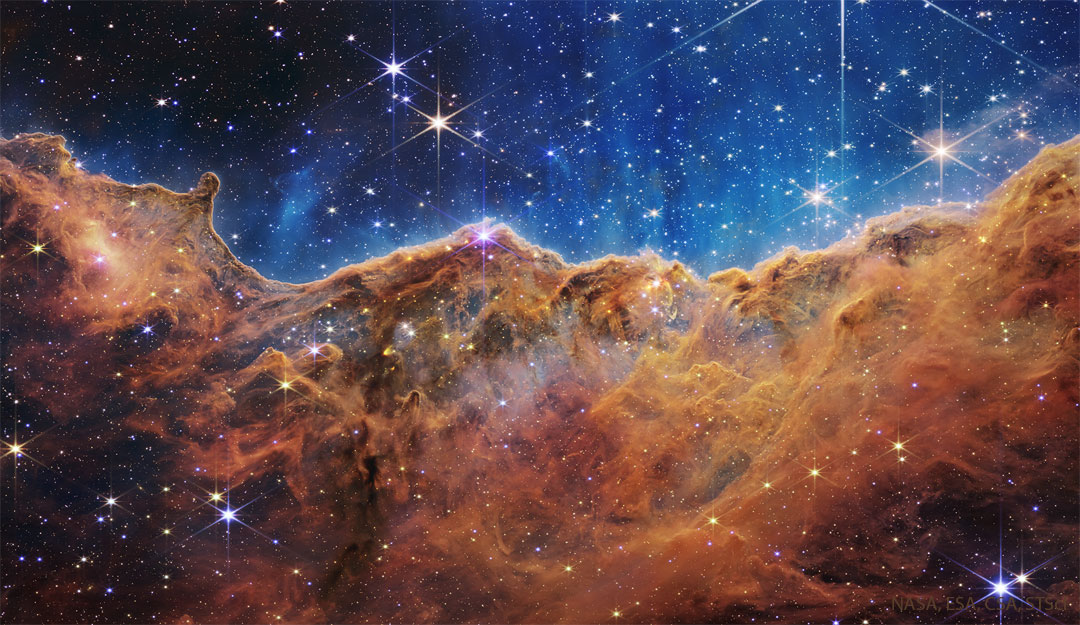2022年9月5日
Carina Cliffs from the Webb Space Telescope
Image Credit: NASA, ESA, CSA, STScI
Explanation: Stars created these cliffs. Specifically, the destructive winds and energetic light from the stars in the open cluster NGC 3324 eroded away part of a mountain of dark interstellar dust in the northern part of the Carina Nebula. Several of these stars are visible toward the top of this highly detailed image taken recently by the James Webb Space Telescope, the largest astronomical telescope ever launched. Webb’s large mirror and ability to see dust-piercing infrared light has enabled it to capture fascinating details in the dust, hundreds of previously hidden stars, and even some galaxies far in the distance. The featured jagged cliffs occur in part of Carina known as the Gabriela Mistral Nebula — because when viewed in another orientation, they appear similar to the facial profile of the famous Chilean poet. These nebular cliffs occur about 7,600 light years away toward the southern constellation of Carina.
Astrophysicists: Browse 2,800+ codes in the Astrophysics Source Code Library
Tomorrow’s picture: rainbow cloud top
韦伯太空望远镜的船底座峭壁
影像提供: NASA, ESA, CSA, STScI
说明: 恒星造就了这些峭壁。具体来说,来自疏散星团NGC 3324恒星的破坏性恒星风和高能星光,侵蚀了船底座星云北侧一座黝黑星际尘埃山的一部分。而在这幅最近由詹姆斯·韦伯太空望远镜(迄今发射过的最大型天文望远镜)所拍摄的高解析影像的顶部,可以看到隶属于此星团的数颗恒星。韦伯的大主镜以及能看穿尘埃的红外光能力,让它得以记录到尘埃、数百颗原先隐藏的恒星,甚至是后方星系里的有趣细节。这幅主题影像所呈现的锯齿状峭壁,是船底座方向的加夫列拉·米斯特拉尔星云,因为当从另一个角度观看时,它看起来仿佛具有智利著名诗人的面部轮廓。这些星云峭壁出现在南天的船底座约7,600光年远之处。
天体物理学家: 浏览天体物理学源代码库中的2,800多个代码
明日的图片: rainbow cloud top







